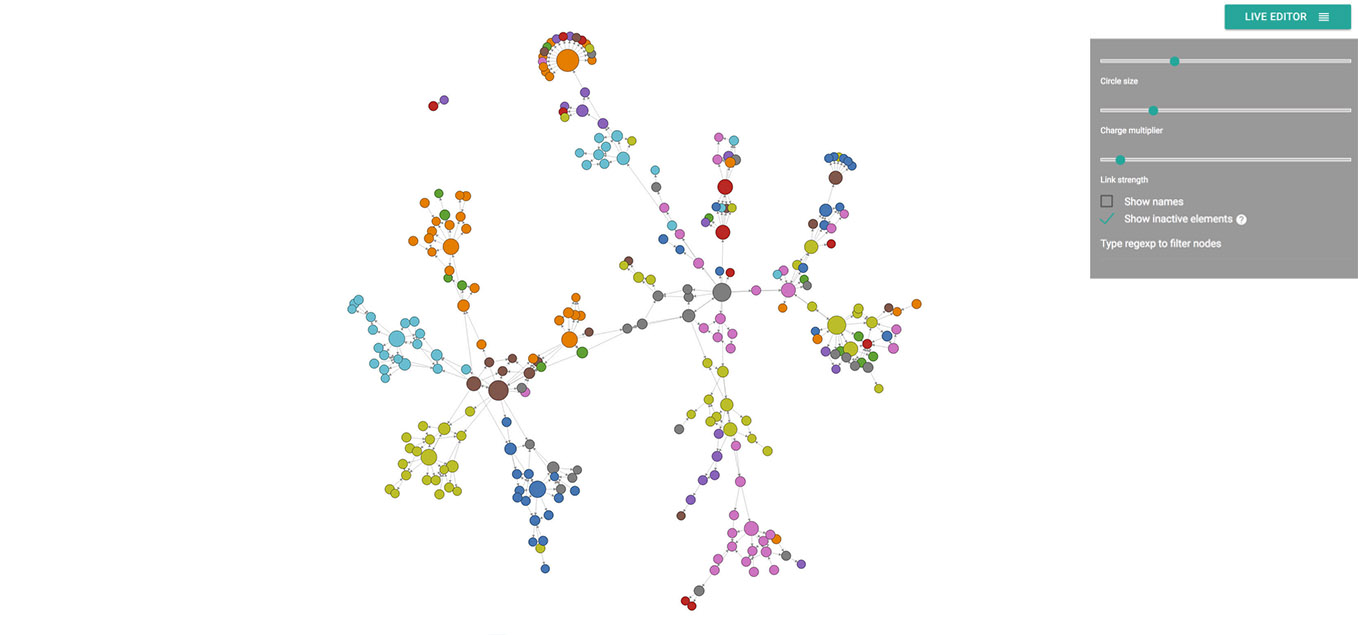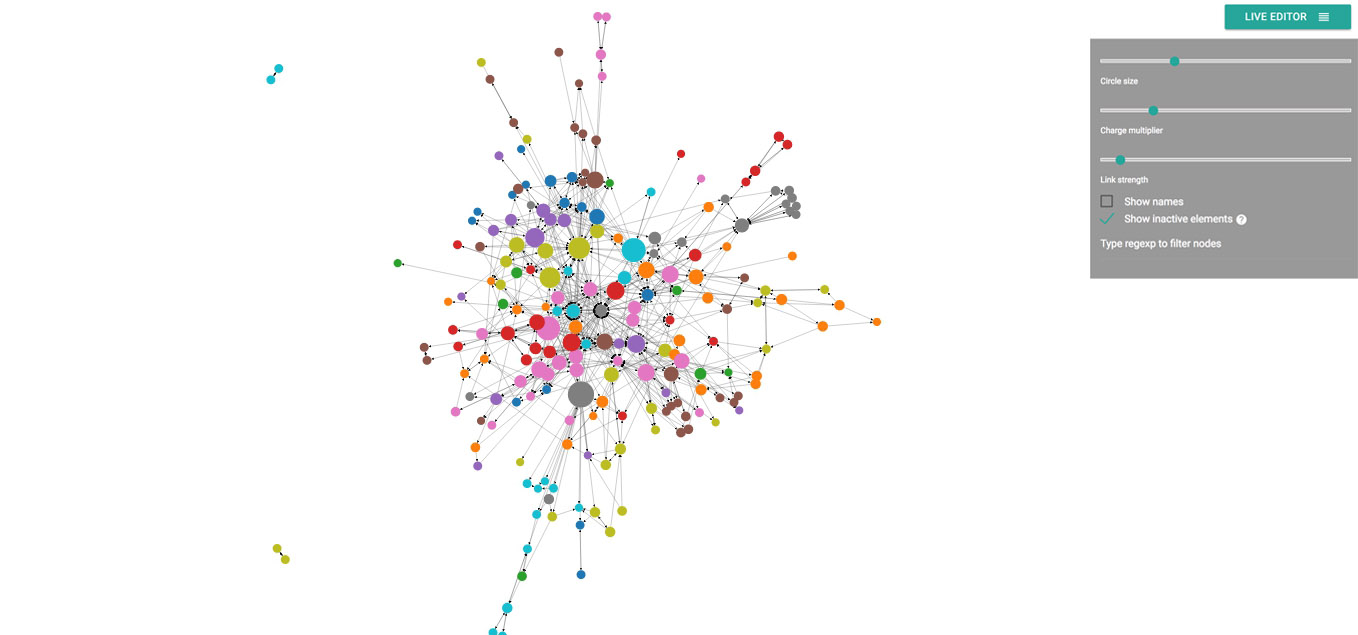Android dependency visualizer. It's a tool that helps to visualize current state of your project. It's really easy to see how tight your classes are coupled.
Class coupling is one of the significant code metrics which shows how easy is to change your code. Actually the architecture of microservices is based on the idea that the modules should be low-coupled so you are able to easily replace one module with another one with the same interface. This tool helps to view whole picture of your project. Check yourself!
This project consists of the several parts:
- lib (apktool)
- src, build (apk-dependency-graph)
- gui (d3)
- run scripts
To get more information please check our wiki page.
To compile build/jar/apk-dependency-graph.jar you need:
- ant 1.9.9 or newer.
- at least Java 5
From terminal just move to the parent folder of the project and runantcommand. Classes will be generated tobuild/classesfolder and jar file will appear ontobuild/jarfolder.
You need at least Java 7 to run apktool and apk-dependency-graph jar files.
I've prepared helpful scripts for you. All you need to do is to clone this repository (or download and unpack release archive) and type the next command in your command line:
For Windows:
run.bat full\path\to\the\apk\app-release.apk com.example.test true
or
run.bat full\path\to\the\apk\app-release.apk nofilter false
where run.bat is a path to script in your local repository, full\path\to\the\apk\app-release.apk is a full path to the apk file you want to analize, com.example.test is a filter. We recommend to use your package name as a filter so you will avoid unnecessary dependencies in your graph. If you don't want to filter just pass nofilter. The last argument defines whether you want to skip inner classes on your graph (true to skip, false otherwise).
For Unix:
./run.sh full/path/to/the/apk/app-release.apk com.example.test true
or
./run.sh full/path/to/the/apk/app-release.apk nofilter false
Wait until the command finishes:
I: Using Apktool 2.2.0 on app-release.apk
I: Loading resource table...
I: Decoding AndroidManifest.xml with resources...
I: Loading resource table from file: C:\Users\username\AppData\Local\apktool\framework\1.apk
I: Regular manifest package...
I: Decoding file-resources...
I: Decoding values */* XMLs...
I: Baksmaling classes.dex...
I: Copying assets and libs...
I: Copying unknown files...
I: Copying original files...
Success! Now open index.html in your browser.
It will decompile your apk and create apk-file-name folder in the same folder where the script is. After this it will analyze the smali code and generate gui/analyzed.js file which contains all dependencies.
Now open gui/index.html in your browser and enjoy!
If you don't want to use run scripts you can do all the stuff from the command line by yourself.
Firsly, decompile your apk with the apktool jar:
java -jar apktool_2.2.0.jar d path-to-apk.apk -o path-to-folder-with-decompiled-files -f
After this run apk-dependency-graph:
java -jar build/jar/apk-dependency-graph.jar -i path-to-folder-with-decompiled-files -o analyzed.js -f com.example.test -d true
I suggest to use your package name as a filter. If you don't want to filter just pass nofilter.
Now open gui/index.html in your browser and enjoy!
Here is the sample of good architecture with low class coupling:

And this one looks like a spaghetti:

Does your project look like the first or the second picture? :)
Watch demo video.
Share your awesome architecture using #apkdependencyvizualizer hashtag!
Aware! This tool cannot analyze apks generated with enabled instant run feature. This is a limitation of apktool running under the hood.
If you have troubles look through troubleshooting wiki page or create an issue in this repository.
There is the same tool for iOS: https://github.com/PaulTaykalo/objc-dependency-visualizer
I have used gui/index.html of that project. Thanks Paul for the great tool.
I want to say thank you to all the people who made even tiny pull request. This project is intended to improve current state of Android architecture all over the world so each detail is important. Below you can find a list of people who have found some time to improve this tool:
Yes, we really need you man! We always have something to do and have special label for such issues. If you want to add or edit something on this tool - welcome!

